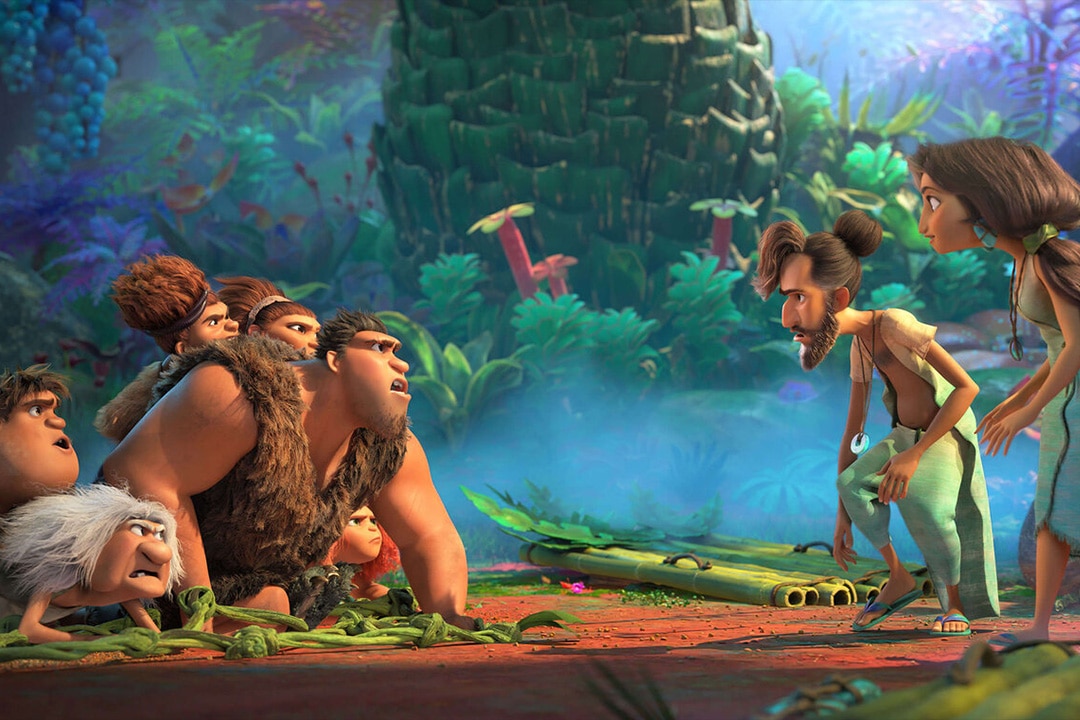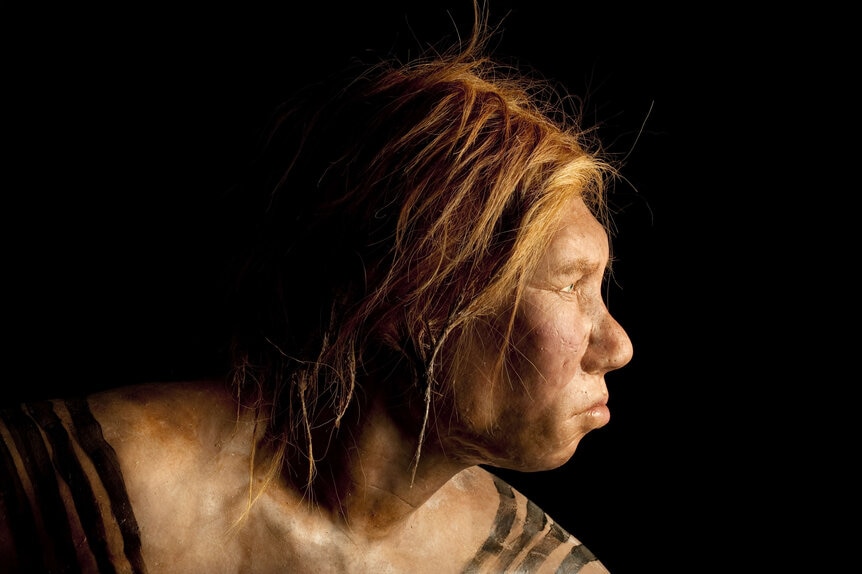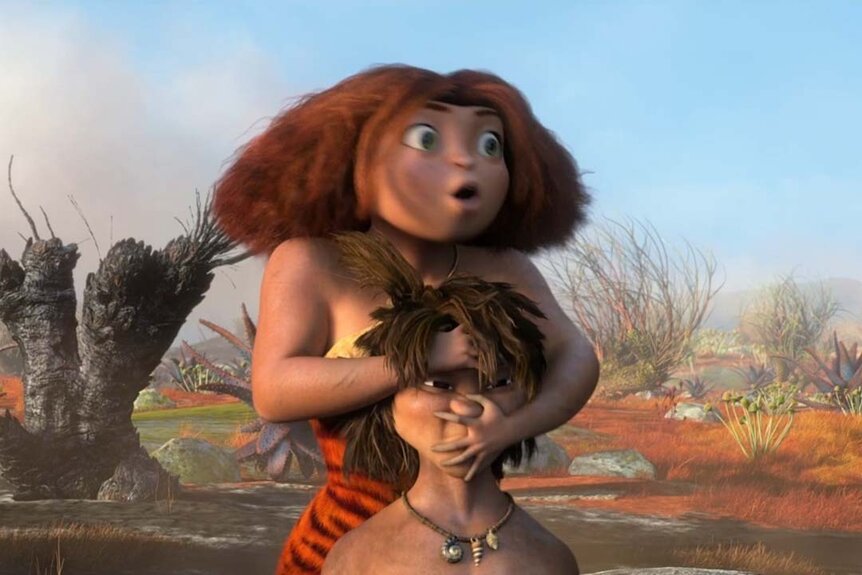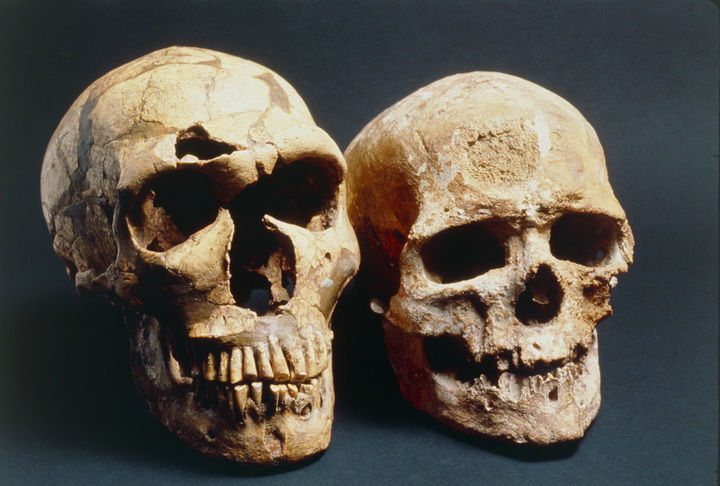Create a free profile to get unlimited access to exclusive videos, sweepstakes, and more!
Turns Out, Neanderthals and Homo Sapiens Might Be the Same Species
If Neanderthals and Homo sapiens interbred, were they really different species?

When viewers returned to the Croodaceous in The Croods: A New Age (streaming now on Peacock) the Croods and their companion Guy (Ryan Reynolds) were still on the hunt for a new place to settle down. That’s when they encountered a strange wall and found a family of Homo sapiens on the other side.
RELATED: Surprising Things The Croods Got Right About Ancient Human History
The film portrays two distinct groups of hominids. There are the titular Croods, knuckle-dragging neanderthals, and there are the Bettermans, whose name is a not-so-subtle implication that they are an improvement on the prior human model. It’s an attitude that’s in line with the popular consensus about our long-lost human cousins. Neanderthals have been portrayed as dim-witted and inelegant since they were first discovered two centuries ago, but the more we learn of them, the more like us they seem. It might be time for us to reconsider whether Homo neanderthalensis was actually a different species or just a variation on our own.
What Is a Species, Really?
The real problem we’re encountering is the contrast between our need to categorize things and nature’s unwillingness to play by our rules. It’s easy to look at a horse and a hippo and know that those are different creatures, but if you trace their histories back far enough, that’s no longer the case. Somewhere along the way, the last common ancestor of horses and hippos diverged until, millions of years later, we have two clearly different and incompatible animals. If you choose two more closely related animals, however, like horses and donkeys, or modern humans and Neanderthals, the distinction becomes less clear.
We’re also dealing with the cultural baggage that is our need to be at the center of things. We see ourselves as the main characters, if not of the universe than at least of our planet. It seems obvious that we must be unique; anything we find in the dirt, even our slightly different ancestors, must be something else entirely. But that might be an emotional reaction, not a scientific one.
RELATED: Turns Out Human DNA Isn’t Really That Human After All
Certainly, Neanderthals were different from Homo sapiens. If you put a living Neanderthal in with a group of anatomically modern people, you’d probably be able to pick them out of a lineup pretty easily, but that doesn’t necessarily make them a different species. All sorts of animals have morphological variation within a species but still behave as a single group.
Neanderthals and Homo sapiens Interbred
Neanderthals separated from the rest of the human lineage about half a million years ago. They spread out of Africa and across Eurasia, arriving about 440,000 years ago. Homo sapiens didn’t get to the area until about 50,000 years ago, by which time the Neanderthals were old hats, having adapted to a variety of harsh climates. It’s at that point, when H. neanderthalensis and H. sapiens meet up in Eurasia that things get tricky.
Research carried out in the last couple of decades successfully sequenced the Neanderthal genome and revealed a previously hidden family secret: Neanderthals and Homo sapiens interbred. If your ancestry is outside of Africa, then you have about 2% (give or take) Neanderthal DNA inside you. That’s a problem if we want Neanderthals to be a different species from us.
RELATED: 86,000-Year-Old Human Remains Rewrite History of Human Expansion
The common definition of a species is a group of organisms with similar characteristics who are capable of exchanging genetic information and reproducing. In practical terms, that means they are reproductively isolated. A dog and a bear aren’t that distantly related but they can’t have offspring together; that’s reproductive isolation. There are, of course, some exceptions and some animals do hybridize, but their offspring are, by and large, infertile. You can breed a horse and a donkey or a lion and tiger and get a mule or a liger, but you can’t have a self-sustaining population of mules or ligers.
Those reproductive relationships between closely related species are another piece of evidence that there is no clear dividing line. Speciation is a slow process, and the evidence of our own DNA suggests that Home sapiens and Neanderthals had not yet diverged enough to become reproductively isolated.
Neanderthals Looked Different, But Looks Aren’t Everything
Despite our apparent ability and desire to mix and mingle with our Neanderthal friends, they did have some pronounced physical differences from early modern humans. Neanderthals had a lower and longer skull, a more pronounced brow, a wider pelvis, and different inner ear bones. Those differences suggest that Neanderthals were at the very least, on their way to becoming something different, but they weren’t there yet.
If they had survived into modernity and if we had continued to interbreed, perhaps we would have become one remerged species with a more even genetic split. But that didn’t happen. For reasons we don’t totally understand, Neanderthals disappeared. Today, they live only in our imagination and as a small part of the extant human species. From a certain point of view, Neanderthals aren’t a separate species and they aren’t gone. They are us and we are them, at least a little bit.
The question, it seems, is not whether we and Neanderthals were the same species, but where and how we draw species lines and how flexible those lines should be.
We’ll never really know what it was like to live alongside Neanderthals, but we can imagine it in The Croods: A New Age, streaming now on Peacock.

















